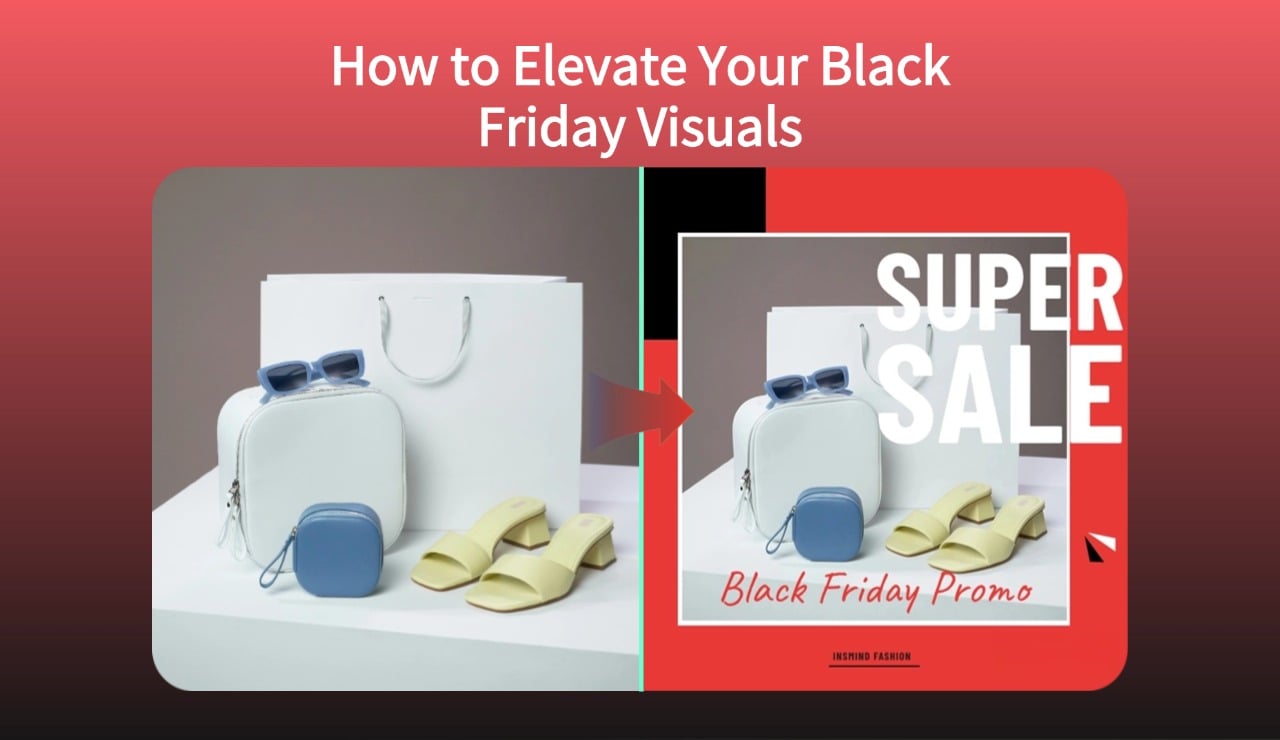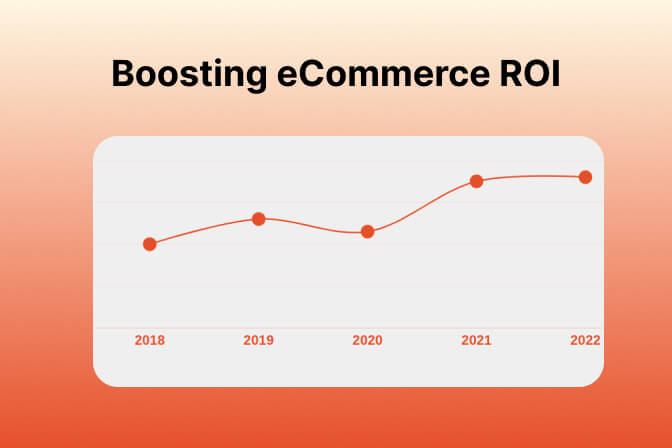Identifying the Differences Between Depop vs. Poshmark
In the post-COVID era, e-commerce stores emerged as viable solutions for modern fashion enthusiasts. Through these platforms, customers can enjoy an accessible way of buying and selling attires at competitive prices. The development of such websites has now eliminated the need for physical store visits, providing an easier shopping experience.
One of the main benefits of these clothing services is the ability to find unique items that may not be available in traditional stores. Apart from buyers, these stores have made it simpler for sellers to reach a global audience with the right marketing. To help you pick the best platform among them, this article compares the buying and selling experience on Depop vs. Poshmark.
Table of Contents
- 01 A General Introduction to Depop
- 02 A Quick Overview of Poshmark
- 03 Depop vs. Poshmark - Audience Reach & Categories
- 04 Depop vs. Poshmark - Fee
- 05 Depop vs. Poshmark - Shipping
- 06 Depop vs. Poshmark - Return & Customer Support
- 07 Depop vs. Poshmark - Entry Conditions
- 08 Depop vs. Poshmark - Which One is Right for You?
- 08 Useful Tips to Sell on More Depop and Poshmark
Part 1. A General Introduction to Depop
Reaching new heights nowadays, Depop emerged on the scene during the early 2010s. As a diverse fashion marketplace, this platform allows anyone to buy and sell secondhand fashion items. The company has a team of over 400 people, and its headquarters are in London. It is particularly known for its vibrant community of young, fashion-forward sellers who often love to bring forward vintage and handmade clothing.

With a simple interface, Depop allows sellers to create personalized shops and buyers to explore various fashion items. This shopping platform is also available as an application to provide an even more convenient buying and selling experience on the go.
Part 2. A Quick Overview of Poshmark
When comparing Poshmark vs. Depop, this shopping platform got recognition for facilitating the buying and selling of secondhand fashion in early 2011. Poshmark has a community of millions of members which makes it one of the largest resale platforms. Initially, this shopping service only included fashion items but now it has introduced a range of products, such as toys and electronics.

The enhanced user experience streamlines the selling prices by providing prepaid shipping labels and easy-to-use listing tools. This feature makes this service a top choice for users looking to sell and purchase fashion items with minimal effort.
Part 3. Depop vs. Poshmark - Audience Reach & Categories
Having basic information about both of these shopping platforms, let's now delve into the comparison of Depop vs. Poshmark audience reach and the categories they offer:
Audience Reach
Poshmark has a large audience of 100 million active users, mainly in the US and Canada. Its main audience is geographically limited to the US, and users cannot access this site internationally. Moreover, this shopping platform caters to the needs of a wide range of age groups.
When comparing selling on Depop vs. Poshmark, the first one has over 350 million registered users in up to 100 countries. It is particularly popular among youngsters who are interested in discovering trendy and unique fashion items.
Categories
The range of products and items sold by Depop and Poshmark are quite similar. Both of the e-commerce sites are fashion-focused but offer a broad range of selling categories. On Poshmark, you can sell attires and buy home products, pet items, and basic electronics. The top-selling categories on Poshmark include:
- Fashion: Women's clothing, Men clothing, shoes, accessories
- Beauty: Makeup, Haircare, Skincare, and more.
- Home Products: Home decor
Users can sell adult and children's fashion, vintage items, and designer accessories on Depop. The top-rated selling categories on Depop are as follows:
- Fashion: Women's clothing, men's clothing, shoes, accessories, designer dresses
- Vintage: Including unique and retro fashion products
- Home Goods: Basic home decor and artistic pieces
Part 4. Depop vs. Poshmark - Fee
Understanding the fee policies is important when using Depop and Poshmark to buy or sell items. Now, we will delve into the Depop vs. Poshmark fee structure to let you manage costs and maximize profits while using these platforms:
1. Poshmark
Poshmark has a flat fee of $2.95 that is applied to sales of items priced at $15 or less. For items sold for more than $15, it takes a 20% commission of the sale price.
2. Depop
Depop charges a 10% commission on all sales, including the item price and shipping costs. Moreover, users paying from PayPal accounts get charged a 2.9% fee with an added transaction fee of $0.30.
Part 5. Depop vs. Poshmark - Shipping
Before shopping from any of these platforms, you must be aware of the Poshmark vs. Depop shipping policy. After getting to know about this information, you can optimize your buying and selling experience.
Poshmark simplifies this by offering prepaid shipping labels. Shipping costs are typically calculated on the item's weight, ranging from three to fourteen dollars.
On Depop, sellers have the choice to either pay for shipping or pass the cost on to the buyers. This shopping service partners with USPS to offer trackable shipping labels starting at around four dollars to fourteen dollars, depending on the weight of the item.
Part 6. Depop vs. Poshmark - Return & Customer Support
Moving forward from discussing the shipping elements of Depop vs. Poshmark, let us examine these online shopping platforms' return policies and customer support:
Return
When looking into Poshmark's return policy, you cannot return an item until and unless you provide photographic evidence to support your complaint. Usually, Poshmark does not accept a return until the item is marked as damaged or wrong. Alternatively, Depop allows its sellers to create their return policy so that the buyers' and sellers' protections are in place.
Customer Support
Depop's customer support is fair compared to other e-commerce websites and platforms, as both parties involved can communicate back and forth to solve issues. They are not quick with their responses but follow the return policies and terms of service to stay valid to both the buyer and seller. Conversely, Poshmark's customer support is not as supportive and understanding when accommodating the queries of the individuals involved.
Part 7. Depop vs. Poshmark - Entry Conditions
Both Depop and Poshmark make it easy for anyone to get started on their selling journey. The barrier to entry is quite low, meaning that whether you're a casual seller or looking to turn reselling into a side business, both platforms are accessible with minimal setup.
When comparing selling on Poshmark vs. Depop, both allow you to create an account for free. You just need an email address or you can sign up using social media accounts like Facebook or Google. Once signed up, sellers can immediately begin creating listings, allowing them to sell items directly from their closets.
While setting up your store, you will be able to upload several high-quality images of your product. To catch the eyes of the target audience, we recommend you use insMind to create professional-looking posters and product photoshoots for any platform.
Part 8. Depop vs. Poshmark - Which One is Right for You?
Choosing between these shopping sites depends on your selling preferences and target audience. After exploring the previous sections of the article, you must be aware of all the key differences between these platforms. To make an optimal selection, consider the following strengths and weaknesses of Depop vs. Poshmark selling:
Poshmark
 Pros
Pros
- Allows up to 16 pictures per listing
- More promotional opportunities
- Extensive payment options
- Does not include any listing charges
 Cons
Cons
- Only available in 4 countries
- No direct messaging utility with the clients
- Higher fees and commission
- Listings can sometimes be less visible due to the large volume of items
Depop
 Pros
Pros
- Allows direct communication between customers and sellers for questions.
- Lower seller fees
- No listing charges
- Available around the globe in 150 countries
 Cons
Cons
- Sellers are responsible for transaction fee
- Inactive customer support
- Can only include up to four images per listing
- Lack of range of options for promoting your products
Poshmark is Best For:
- Suitable for sellers with mainstream, trendy, or high-demand fashion items that are attractive to a broader audience, including many millennials. This shopping platform is best for professionals who prefer structured shipping as it provides shipping labels that simplify the process.
Depop is Best For:
- A great choice for sellers who specialize in unique and trendy fashion items aimed at a younger audience. It is particularly useful for users who want to benefit from lower fees, as this service only charges a 10% commission on sales.
Part 9. Useful Tips to Sell on More Depop and Poshmark
After exploring the key differences between various aspects of Depop vs. Poshmark, you might have chosen your preferred e-commerce site for making your store. To maximize your success on your chosen platform, consider using insMind to enhance your store's visual appeal and boost sales. Apart from that, you can utilize advanced AI design tools provided by insMind. Here's how you can leverage those tools to optimize your online store:
1. Generate AI Backgrounds
insMind offers an incredible AI Background feature that can generate realistic and complimentary settings for your designs. Upon uploading your product image, AI will automatically suggest background options that enhance the look of your design.

2. Create Attractive Product Flyers
Designers can use the AI Design tool of insMind to create compelling product designs for their business. Moreover, the tool provides you the option to add descriptions to effectively communicate the features of the products.

3. Make Product Collage
Using insMind AI, you can create compelling Product Collages with just one click. The tool offers a range of collage styles that you can choose from, allowing you to arrange multiple product images attractively.

4. Make Your Products Looks Realistic
insMind includes an AI Shadows Generator to help you add shadows to your product pictures while offering 10+ shadow effects and 360° angle options. It also lets you customize the shadow effect with the help of opacity, offset, length, width, and blur settings options. This feature will be quite beneficial if you are going to sell your products on Depop or Poshmark.

Conclusion
In this article, we have presented an in-depth comparison of Depop vs. Poshmark, two prominent e-commerce platforms for buying and selling clothes. After reviewing their differences and key features, you must have chosen your preferred platform for opening your store. To elevate your store's success, consider using the advanced AI features of insMind to generate compelling product flyers and designs.
















